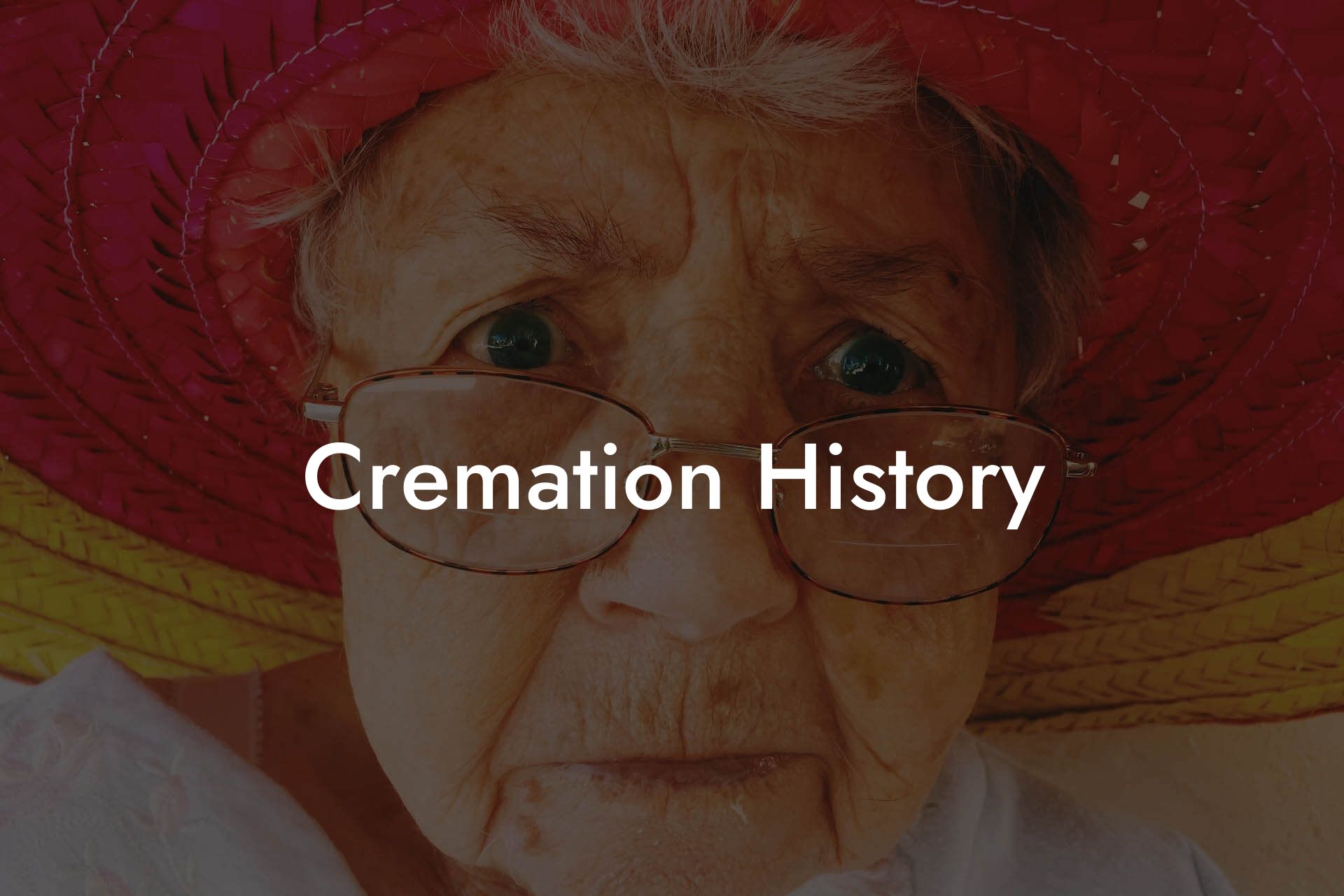Imagine a world where the ancient rituals of cremation meet modern technology, where the environment and personal beliefs converge, and where the farewell ceremony becomes a celebration of life. Welcome to the fascinating realm of cremation history, where the past, present, and future blend together in a rich tapestry of cultural, spiritual, and ecological significance.
Quick Links to Useful Sections
- Ancient Origins: The Birth of Cremation
- The Middle Ages: A Shift Towards Burial
- The Modern Era: Cremation's Resurgence
- Environmental Impact: The Eco-Friendly Aspect of Cremation
- Personalization and Memorialization: The Modern Cremation Experience
- Cremation Around the World: Cultural and Spiritual Significance
- Frequently Asked Questions: Cremation History and Beyond
- Resources and Community Support: Your Next Steps
Ancient Origins: The Birth of Cremation
The history of cremation dates back to ancient times, with evidence of cremation practices found in the Indus Valley Civilization around 3000 BCE. The ancient Greeks and Romans also adopted cremation as a common funeral practice, with the ashes often placed in ornate urns and buried in family tombs.
In these early civilizations, cremation was not only a means of disposing of the dead but also a way to purify the body, release the spirit, and prevent the spread of disease. The practice was often accompanied by elaborate rituals, prayers, and offerings to the gods.
The Middle Ages: A Shift Towards Burial
With the rise of Christianity in Europe during the Middle Ages, cremation began to decline in popularity. The Catholic Church viewed cremation as a pagan practice, and burial became the preferred method of disposing of the dead.
During this period, the concept of resurrection and the importance of preserving the body intact for the afterlife led to a shift towards burial. The practice of cremation was seen as a threat to these beliefs, and it was eventually banned in many European countries.
The Modern Era: Cremation's Resurgence
The late 19th and early 20th centuries saw a resurgence of interest in cremation, driven in part by the growing urbanization of society and concerns about public health.
The first modern crematorium was built in Milan, Italy in 1876, and the practice soon spread to other parts of Europe and North America. Today, cremation is a popular choice for many people around the world, with over 50% of Americans opting for cremation over traditional burial.
Environmental Impact: The Eco-Friendly Aspect of Cremation
One of the primary drivers of the modern cremation movement is the growing concern about the environmental impact of traditional burial practices. Cremation is widely recognized as a more eco-friendly option, requiring less land, energy, and resources than traditional burial.
Modern cremation technology has also made significant strides in reducing emissions and minimizing the environmental footprint of the process. Many crematories are now equipped with state-of-the-art filtration systems, and some even use bio-cremation, a process that uses water instead of flame to break down the body.
Personalization and Memorialization: The Modern Cremation Experience
Today, cremation is not just a means of disposing of the dead but a way to celebrate the life of the deceased. Modern cremation services offer a range of options for personalization and memorialization, from customized urns and memorial jewelry to virtual memorial platforms and online tributes.
Families can choose to scatter the ashes in a meaningful location, plant a tree or garden, or create a memorial in a special place. The possibilities are endless, and the focus is on celebrating the life and legacy of the deceased.
Cremation Around the World: Cultural and Spiritual Significance
Cremation is practiced in many cultures around the world, each with its unique customs and traditions. In Hinduism, cremation is seen as a way to release the soul from the cycle of rebirth, while in Buddhism, it is believed to help the deceased achieve a higher state of consciousness.
In some African cultures, cremation is a symbol of purification and renewal, while in many Asian cultures, it is seen as a way to honor the ancestors and ensure their spirits are at peace.
Frequently Asked Questions: Cremation History and Beyond
Here are some frequently asked questions about cremation history, the cremation process, and modern cremation practices:
1. What is the history of cremation?
Cremation has a rich history dating back to ancient times, with evidence of cremation practices found in the Indus Valley Civilization around 3000 BCE.
2. Is cremation environmentally friendly?
Yes, cremation is widely recognized as a more eco-friendly option than traditional burial, requiring less land, energy, and resources.
3. What are the different types of cremation?
There are several types of cremation, including traditional flame-based cremation, bio-cremation, and alkaline hydrolysis.
4. Can I customize my cremation service?
Yes, modern cremation services offer a range of options for personalization and memorialization, from customized urns and memorial jewelry to virtual memorial platforms and online tributes.
5. Is cremation a religious practice?
Cremation is practiced in many cultures and religions around the world, each with its unique customs and traditions.
Resources and Community Support: Your Next Steps
Whether you're considering cremation for yourself or a loved one, there are many resources available to support you on your journey. From online forums and support groups to cremation associations and funeral homes, there are many ways to connect with others who share your interests and concerns.
Take the first step today and explore the world of cremation history, culture, and practices. Join the conversation, ask questions, and discover the many ways in which cremation can be a meaningful and empowering choice.

